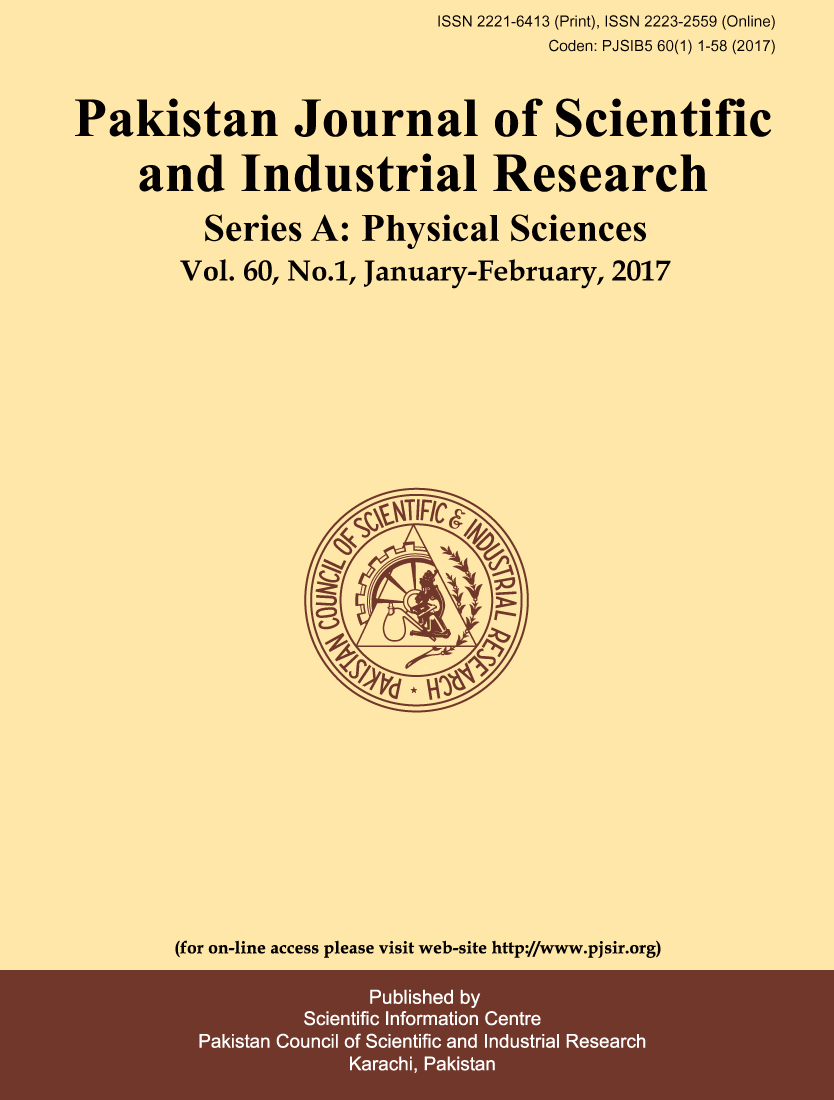Turmeric Powder as a Natural Heavy Metal Chelating Agent: Surface Characterisation
Abstract
The present study was conducted to investigate surface properties of turmeric in order to evaluate
its detoxification potential and ability to sequester toxic metals ions. Scanning Electron Microscopy (SEM),
Energy Dispersion Spectroscopy (EDS), Infra-Red (IR) spectroscopy and potentiometric titrations were
employed for characterisation of the surface of turmeric powder. Spectroscopic studies revealed that the
surface of turmeric powder was porous mainly composed of polymeric -OH , -NH , -CH2 , -COO and
-OH groups of polysaccharides. From potentiometric titrations and modelling of batch titration data, it was
found that surface of the turmeric contains at least four binding sites with pKa values 3.56 (pK1), 4.83
(pK2), 7.68 (pK3) and 10.4 (pK4). Turmeric powder contains highest concentration of amino and hydroxyl
groups for the pK4 values i.e., 0.55 mmol/ g. The total binding sites concentration for turmeric powder
was 1.2 mmol/ g.


